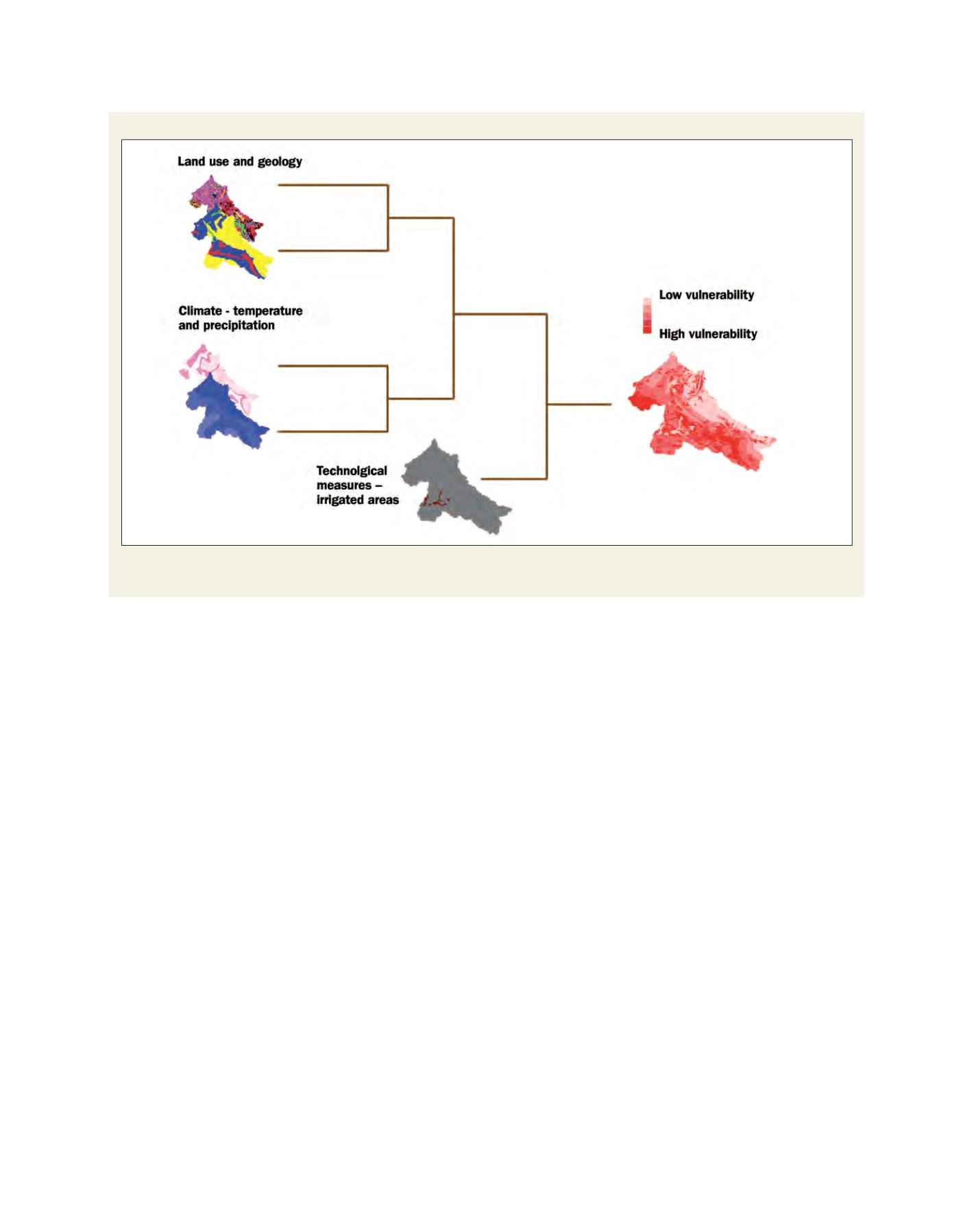

[
] 216
R
isk
G
oveRnance
and
M
anaGeMent
land’s natural potential in regions that are not adjusted
to water scarcity. Drought’s consequences accumulate
slowly and over long periods of time.
In general there are four different types of drought:
meteorological, agricultural, hydrological and socio-
economic. Each type requires an adjusted approach to
monitoring. Meteorological drought is defined by the
level and duration of precipitation deficit. Agricultural
drought refers to situations with insufficient soil mois-
ture levels to adequately nourish crops during the
vegetation period. Soil moisture levels and consequent
severity of agricultural drought are related not only to
precipitation deficit but also to the difference between
actual and potential evapotranspiration. The actual
water requirement depends on the weather situation
(temperature, relative humidity, wind, global radia-
tion), the biological structure of the plant and soil type.
Hydrological drought occurs after a longer period of
precipitation deficit, usually after meteorological and
agricultural drought. Socioeconomic drought occurs
when water deficiency starts to affect human life. It
connects economic standards with elements of mete-
orological, agricultural and hydrological drought.
Defining drought is a complex task due to the variety of
influencing factors. The process should allow for differ-
ences in regions, needs and disciplinary perspectives. The
absence of a single and universal definition of drought
makes it difficult to determine onset and duration. It is
So how do we cope with drought? By the improvement of existing
early drought-detection monitoring systems and the establishment
of new ones, as well as the application of an approach to deploy
sustainable agricultural practices, achieve sustainable forest manage-
ment and stop biodiversity loss. To achieve this goal awareness and
preparedness must be strengthened by training and technology
transfer, in order to increase the knowledge base. Since drought is
a regional phenomenon with diverse and complex impacts at the
local level, appropriate mitigation and responses must also be locally
based. However, the development of appropriate action and poli-
cies can be facilitated through the collaboration of countries in the
region that share similar problems. This idea led to the establish-
ment of the Drought Management Centre for Southeastern Europe
(DMCSEE).
1
Slovenia was entrusted with the organization of the
centre. Its mission is to coordinate and facilitate the development,
assessment and application of drought risk management tools and
policies in Southeastern Europe, with the goal of improving drought
preparedness and reducing impact.
Monitoring drought
Drought is usually defined as a naturally occurring phenomenon
resulting from precipitation being significantly below normal
recorded values, causing serious hydrological and agrological
imbalances that adversely affect land resource production systems.
Drought is a temporary aberration – unlike aridity, for example,
which is a permanent feature of the climate. Seasonal aridity, which
is to say a well-defined dry season, also needs to be distinguished
from drought. Often long-lasting drought causes deterioration of the
Estimation of drought impact of a small region in western Slovenia
An attempt to assess the categorical vulnerability to drought impact of a small region in western Slovenia. Estimation of vulnerability and risk is not a well
defined, straight-forward process. One possible approach is to combine various factors that influence risk
Source: University of Nova Gorica
















